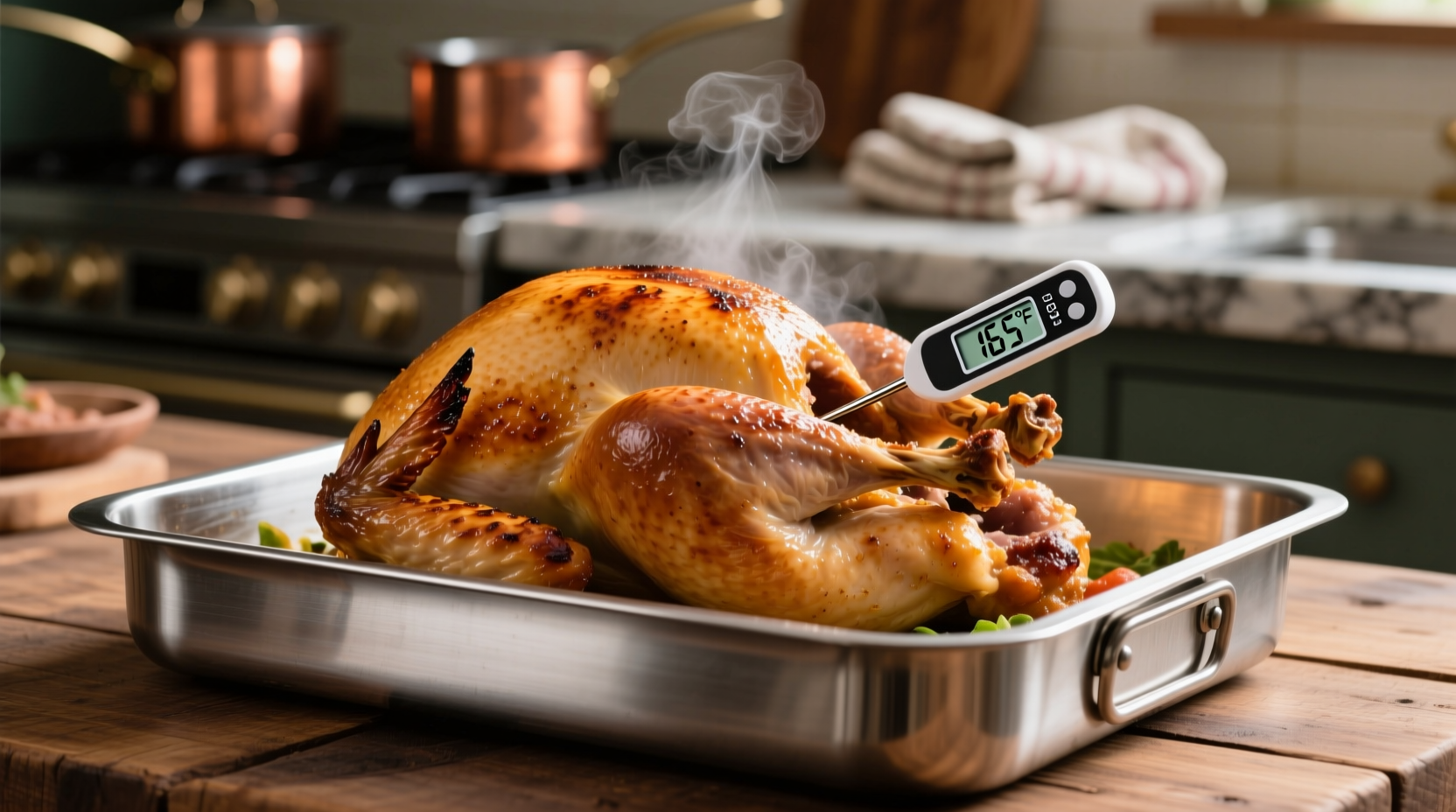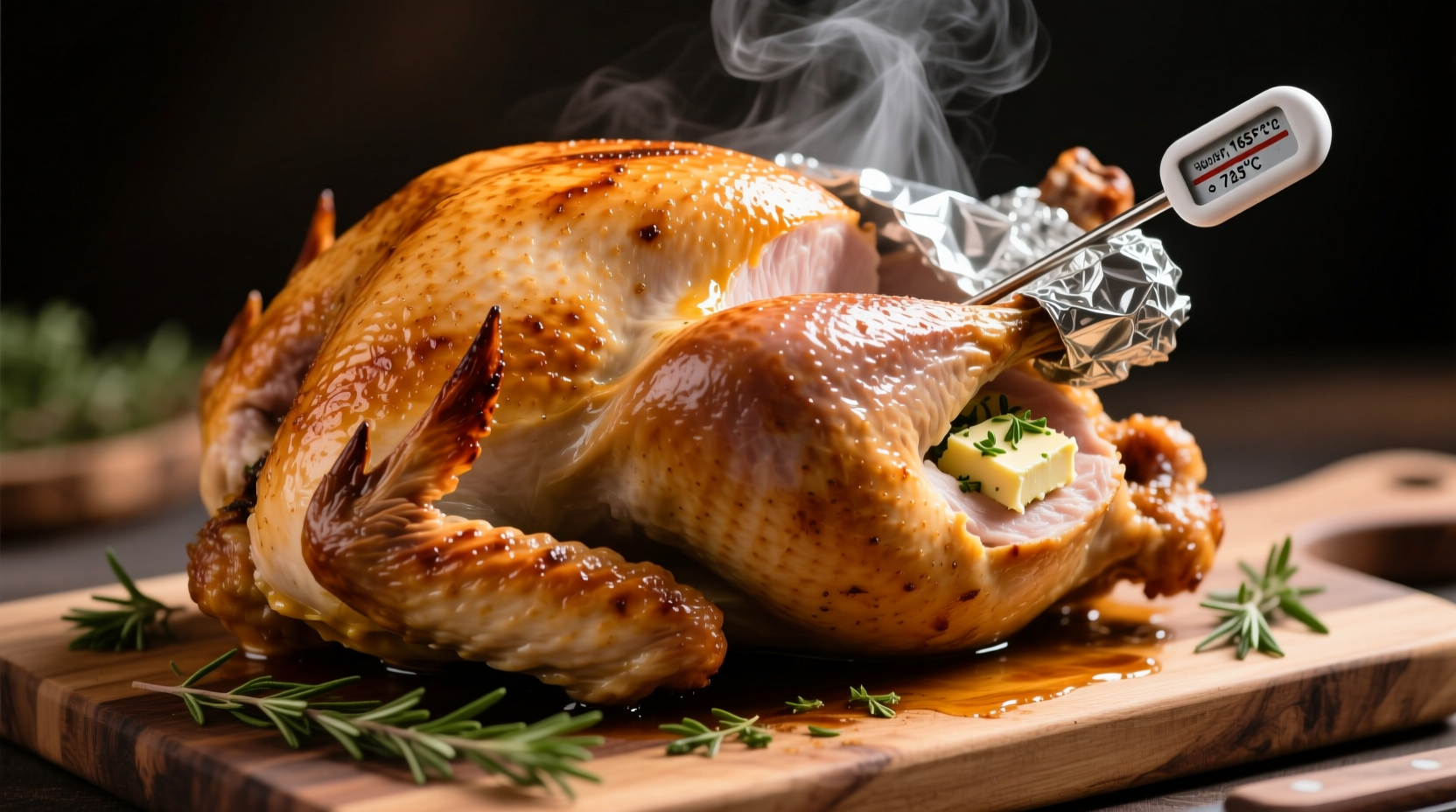| Weight | Oven Temp | Approximate Time | Internal Temp |
|---|---|---|---|
| 8 lbs | 325°F (165°C) | 2h 15m-2h 45m | 165°F (74°C) |
| 8 lbs | 350°F (175°C) | 2h-2h 30m | 165°F (74°C) |
| 8 lbs | Smoker | 3h-3h 30m | 165°F (74°C) |
Your Complete Guide to Perfectly Cooked Turkey Breast
Nothing disappoints more than dry, overcooked turkey breast after hours of preparation. Getting the timing right for an 8-pound turkey breast is crucial for both food safety and achieving that perfect moist texture. Let's break down exactly what you need to know for flawless results every time.
Why Timing Varies: Key Factors You Must Consider
While the standard guideline suggests 13-15 minutes per pound at 325°F, several factors affect your actual cooking time:
- Starting temperature - A turkey breast straight from the refrigerator takes longer than one brought to room temperature
- Oven accuracy - Most home ovens have temperature variations of 15-25°F
- Cooking vessel - Dark pans cook faster than shiny metal or glass
- Convection vs. conventional - Convection ovens reduce cooking time by about 25%
- Stuffing or brining - Moisture content significantly impacts cooking duration
According to USDA Food Safety and Inspection Service guidelines, the only reliable method to determine doneness is checking the internal temperature with a food thermometer. Visual cues alone can't guarantee safety.
Step-by-Step Cooking Process
Preparation (30-60 minutes before cooking)
Remove your turkey breast from the refrigerator 30-60 minutes before cooking. This simple step reduces cooking time by approximately 15% and promotes more even cooking. Pat the skin dry with paper towels - moisture on the surface creates steam rather than allowing proper browning.

Seasoning and Setup (15 minutes)
Season generously with salt, pepper, and your preferred herbs. For optimal results, place the turkey breast on a rack in a roasting pan to allow air circulation. Insert an oven-safe meat thermometer into the thickest part, avoiding bone. Preheat your oven to 325°F (165°C) - this temperature provides the best balance between safety and moisture retention.
Cooking Phase (2 hours 15 minutes to 2 hours 45 minutes)
Place the turkey in the center of your preheated oven. Baste every 45 minutes with pan juices or melted butter to enhance flavor and moisture. Approximately 30 minutes before expected completion time, begin checking the internal temperature. The USDA recommends cooking turkey to a minimum internal temperature of 165°F (74°C) for food safety.
Resting Time (20-30 minutes)
Never skip the resting period! After reaching 165°F, remove the turkey from the oven and tent loosely with foil. Let it rest for 20-30 minutes before carving. During this critical phase, the internal temperature will continue rising 5-10 degrees (carryover cooking), and the juices redistribute throughout the meat. Cutting too soon releases precious moisture onto your cutting board rather than staying in the meat.
Avoiding Common Mistakes
Many home cooks make these critical errors when preparing turkey breast:
- Not using a thermometer - Guessing doneness leads to dry or unsafe meat
- Cutting too soon - Results in significant moisture loss (up to 30% of juices)
- Overcrowding the pan - Prevents proper air circulation and even cooking
- Opening the oven too frequently - Each opening drops temperature by 25-50°F
- Incorrect oven rack position - Center rack provides most even heat distribution
How Turkey Cooking Guidance Has Evolved
Food safety recommendations for turkey have changed significantly over the past two decades. In the early 2000s, many sources recommended cooking turkey to 180°F (82°C), resulting in consistently dry meat. The USDA updated its guidelines in 2006 based on new research showing that 165°F (74°C) is sufficient to destroy harmful bacteria like salmonella when held for even a brief period. This change, documented in the USDA Food Safety and Inspection Service guidelines, revolutionized turkey preparation by allowing for juicier results without compromising safety.
Troubleshooting Guide
Problem: Turkey breast is cooking too quickly
Solution: Reduce oven temperature by 25°F and tent loosely with foil
Problem: Skin isn't browning properly
Solution: Increase oven temperature to 425°F for the final 15 minutes
Problem: Uneven cooking (one side done before the other)
Solution: Rotate the pan 180 degrees halfway through cooking time
Alternative Cooking Methods
While traditional oven roasting remains popular, these alternative methods produce excellent results:
- Slow roasting: Cook at 250°F for 4-5 hours for exceptionally tender meat
- Sous vide: Cook in a temperature-controlled water bath at 145°F for 4 hours, then sear
- Grill roasting: Use indirect heat at 325°F with wood chips for smoky flavor
Each method requires different timing, so always rely on internal temperature rather than clock time alone.
Food Safety Essentials
Proper handling prevents foodborne illness. The USDA Food Safety and Inspection Service emphasizes these critical points:
- Never thaw turkey at room temperature - use refrigerator, cold water, or microwave methods
- Keep raw turkey separate from other foods to prevent cross-contamination
- Cook to minimum 165°F internal temperature in thickest part
- Refrigerate leftovers within 2 hours (1 hour if room temperature exceeds 90°F)
- Consume leftovers within 3-4 days or freeze for longer storage
Remember that visual cues like clear juices or meat pulling away from bones are unreliable indicators of safety. Only a properly calibrated food thermometer provides certainty.











 浙公网安备
33010002000092号
浙公网安备
33010002000092号 浙B2-20120091-4
浙B2-20120091-4